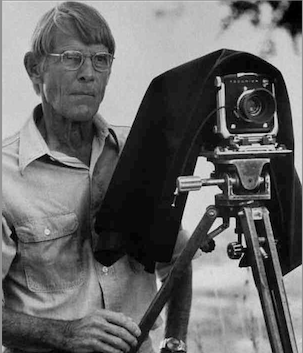Photography
Important insight into FP’s intent as a painter can be found in his admiration for the work of his brother Eliot, the well known nature photographer. Without the aid of a camera, how does one capture the feeling of instantaneity, specific as well as fleeting aspects of reality?
Eliot’s use of color
Fairfield introduced Eliot to Stieglitz and Ansel Adams
Eliot says FP told him he had been influenced by Eliot’s work
“brothers at a party” from short reviews
How do you capture instantaneity in a painting that takes time to make? The bigger the picture the more time it takes.
Edwin Dickinson: premiere coups
Material Witness
p. 69 April 14, 1938 Letter to Alfred Stieglitz: “From what you said about Eliot’s photographs and still more from the prints themselves, I’ve learned a lot. Something I mean that I can use in painting. From other paintings I seem to learn only techniques—except from Renoir, probably because I am not like him. From Eliot I learned something about the attitude of an artist.”
Fairfield’s review of Great Draughtsmen from Pisanello to Picasso by Jakob Rosenberg “Art as a history of drawing” ARTnews 58:44 + 63 December 1959 p. 63 Degas was the artist who first showed the close connection between so-called “photographic realism” and abstraction, which is quite obvious in today’s non-objective painting and color photography of nature.
Life With the Proper Painter” Peter Plagens Newsweek v. 122 p. 53 July, 1993
The typical Porter painting is made up of flat patches of color, loose at the edges, that coalesce into still lifes, figures, interiors and landscapes composed with the casual precision of a great photographer’s snapshot. (His brother, as it happens was the great photographer, Eliot Porter.) What saves his paintings from mere prettiness is Porter’s sense…of the Henry Jamesian significant moment. He usually gets a picture that is both intriguing as a narrative and satisfying as an abstraction.”
